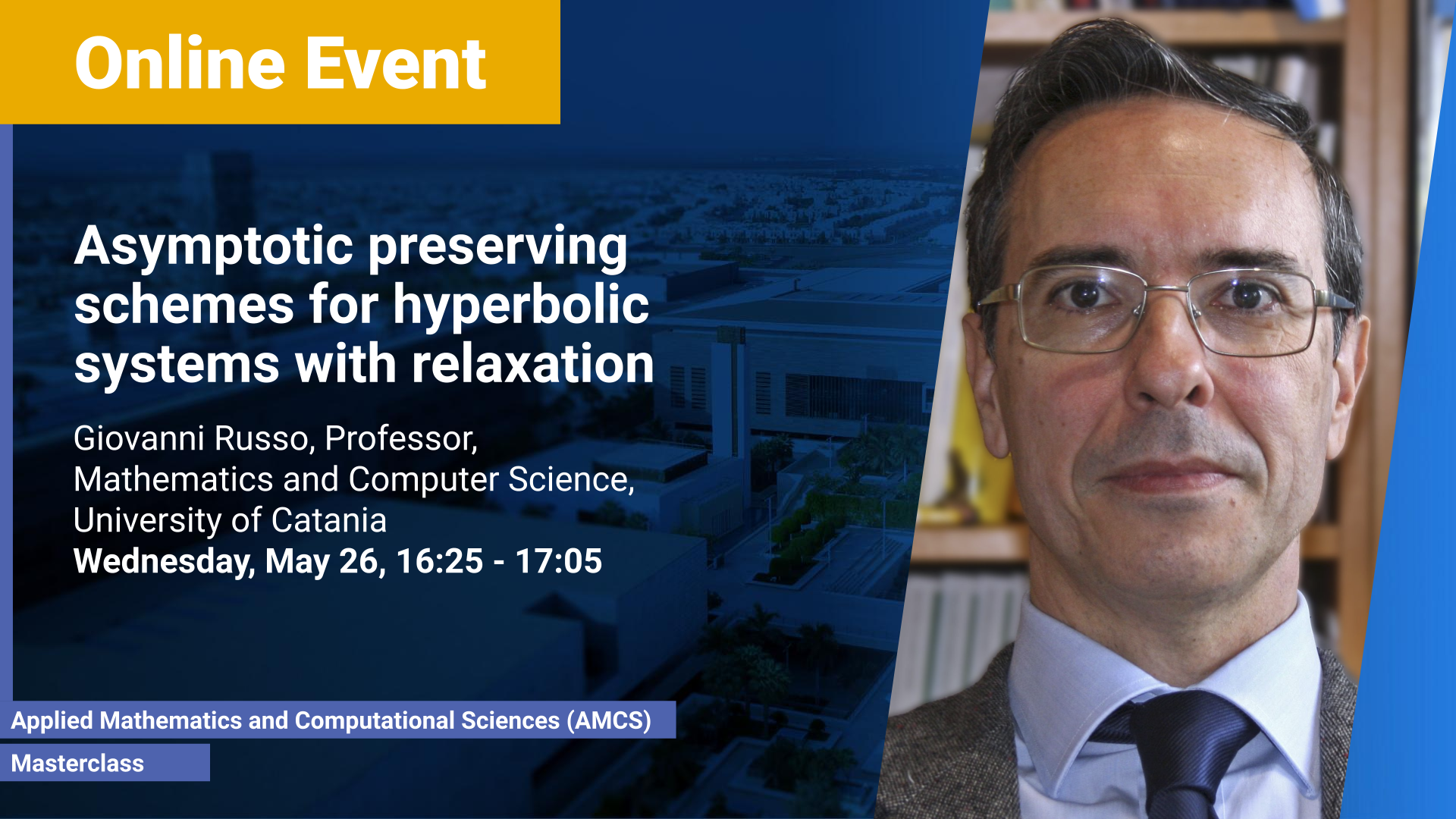Masterclass in Numerical Analysis and Scientific Computing
Abstract
Several physical systems are described by evolutionary partial differential equations describing rarefied gasses, plasmas, and wave propagation in continuous media, just to mention a few relevant applications. From a mathematical viewpoint, many such systems have the structure of hyperbolic systems of balance laws, that must be solved numerically, typically adopting shock-capturing schemes based on finite volume, finite difference, or discontinuous Galerkin space discretization combined with Runge-Kutta of multi-step methods as time integrators.
In some cases, such systems contain stiff relaxation terms, which require implicit treatment to avoid excessively small time steps. In the limit of infinite stiffness, the system reduces to a simplified model involving a smaller number of unknowns. The prototype system is the relaxation model by Jin and Xin [JiXi95], consisting of a semilinear hyperbolic system of partial differential equations with a stiff relaxation on the right-hand side, which depends on a small parameter epsilon appearing in the denominator:
u_t+v_x=0, u_t+a^2 v_x = (f(u)-v)/ε.
As ε vanishes, the system formally relaxes to the scalar quasilinear conservation equation u_t + f(u)_x=0, while the variable v (algebraic variable) is linked to u (differential variable) by the relation v=f(u). This is called hyperbolic to hyperbolic relaxation. The formal convergence becomes rigorous if the so-called sub-characteristic condition is satisfied.
If one is interested in the long-time behavior of the relaxation system, then the time has to be suitably rescaled. In this case, the limit for vanishing epsilon is a convection-diffusion equation (hyperbolic to parabolic relaxation). An effective way to treat these problems is based on Implicit-Explicit (IMEX) schemes, in which the non-stiff hyperbolic part is treated by an explicit scheme, while the stiff relaxation term is treated implicitly [PaRu05]. IMEX schemes, coupled with high-order conservative finite difference methods based on non-oscillatory reconstructions and flux-splitting, allow the construction of accurate and efficient schemes which have the property that, in the case of infinite stiffness, they become a consistent discretization of the underlying relaxed system. We say that such schemes are Asymptotic Preserving (AP).
Several relaxation systems have a similar structure, and the conditions for the construction of AP schemes that are consistent with the relaxed system in the limit have been widely studied in the literature, both for the hyperbolic to hyperbolic [PaRu05], hyperbolic to parabolic [BPR13].
In many cases, systems of balance laws admit stationary solutions, in which flux gradients are balanced by the source term. When small perturbations describing a deviation from the stationary solution are propagated, the signal may be very small, and if the numerical method is not able to preserve stationary solutions exactly or to great accuracy, then the discretization errors introduced on the stationary solution may severely degrade the accuracy of the signal to be computed. To overcome such a problem, methods that preserve stationary solutions, called Well Balanced (WB), have been developed [CaMoPa17].
The purpose of this talk is to give a brief overview of AP schemes for hyperbolic systems with hyperbolic and parabolic relaxation. The possibility of constructing asymptotic preserving well-balanced schemes will be mentioned.
Brief Biography
Position 2000 - Full Professor of Numerical Analysis, Department of Mathematics and Computer Science, University of Catania, Italy.
Education and career: Master in Nuclear Engineering, Polytechnic of Milan, 1982, Ph.D. in Physics, University of Catania 1987, Associate Research Scientist, Courant Institute, NYU (1987-1990), researcher, University of L’Aquila (1990-1992), Associate Professor, University of L’Aquila (1993-2000).
Research interests: numerical methods for PDE’s and kinetic equations, computational fluid dynamics, mathematical modeling, complex networks, and multiscale methods.
Scientific production: more than one hundred and twenty scientific publications in international journals on various topics in applied and computational mathematics, and some books.
Editor in several international journals such as SIAM J. Math. Anal.; Comm. Math. Sciences; SIAM J. Numer. Anal. (2000-2006). Bibliometric indicators: H-index: 49 (google scholar), 33 (Scopus).
G. Russo has been visiting professor in several institutions, in the USA (Univ. of Michigan; UCLA; University of California, Berkeley), in Europe (Kaiserslautern in Germany; Paris VI, Bordeaux, Lyon, Toulouse in France), and in Japan (Kyoto).
Member of scientific committees of several conferences, he has been chair of international conferences such as ECMI 2014 and SIMAI 2014, and organizers of numerous workshops.
He has served as Coordinator of various Phprogramsam in mathematics for more than sixteen years and has been advisor of nine Ph.D. students.
He taught several courses on computational methods at bachelor’s, master and Ph.D. levels, in Italy and abroad.
He has been a PI of national and international research projects. He is currently PI of the PRIN 2017 National Project “Innovative numerical methods for evolutionary partial differential equations and applications”, involving six research units.
